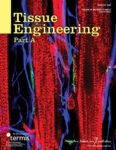高橋 宏信 講師の論文です。
“Contraction Control of Aligned Myofiber Sheet Tissue by Parallel Oriented Induced Pluripotent Stem Cell-Derived Neurons”
TAKAHASHI Hironobu†*, OIKAWA Fumiko, TAKEDA Naoya, SHIMIZU Tatsuya
Tissue Engineering Part A, 28(15-16):661-671(2022)
Abstract
Fabrication and application of engineered complex tissues composed of different types of cells is a crucial milestone in the next phase of tissue engineering. The delicate organization structure of each tissue component and their physiological connections enable all the functions in the human body. In this study, cell sheet-based engineering allowed us to fabricate a complex myofiber sheet tissue using motor neurons derived from human iPS cells. In contrast with previous studies of other groups, a myofiber sheet with a biomimetic aligned structure was produced from human myoblasts using a striped-patterned thermoresponsive dish, which enabled manipulation of the sheet tissue by simply lowering the culture temperature. The myofiber sheet was transferred onto a gel that promotes functional maturation of human myofibers, resulting in production of contractile human muscle tissue. Just by seeding motor neurons onto the sheet tissue, all the neurons physically contacted to the aligned myofibers, and autonomously elongated in parallel to the myofiber orientation. In addition, the neurite outgrowth was enlarged by co-culturing on the myofiber sheet. The presence of the neurons enhanced clustering of myofiber acetylcholine receptors (AChR), typically found at the neuromuscular junctions (NMJs). Consequently, contraction behaviors of the myofiber sheet were regulated by neuronal signal transduction through NMJs. Muscle contraction was induced when the motor neurons were stimulated by glutamic acid, and effectively blocked by administration of d-tubocurarine as an antagonistic inhibitor for the AChR. The fibrin-based gel was useful as a culture environment for tissue maturation and as a favorable substrate for unobstructed contractions. Our neuron-muscle sheet tissue will be scalable by simply enlarging the micropatterned substrate and manipulable three-dimensionally; fabrication of a thick tissue and a bundle-like structured tissue will be possible just by layering multiple sheets or rolling up the sheet. Simplified control over self-orientation of neurite elongation will be advantageous for fabrication of such a large and complex tissue. Therefore, our methodology, established in this study, will be instrumental in future applications of regenerative medicine for locomotion apparatus.



